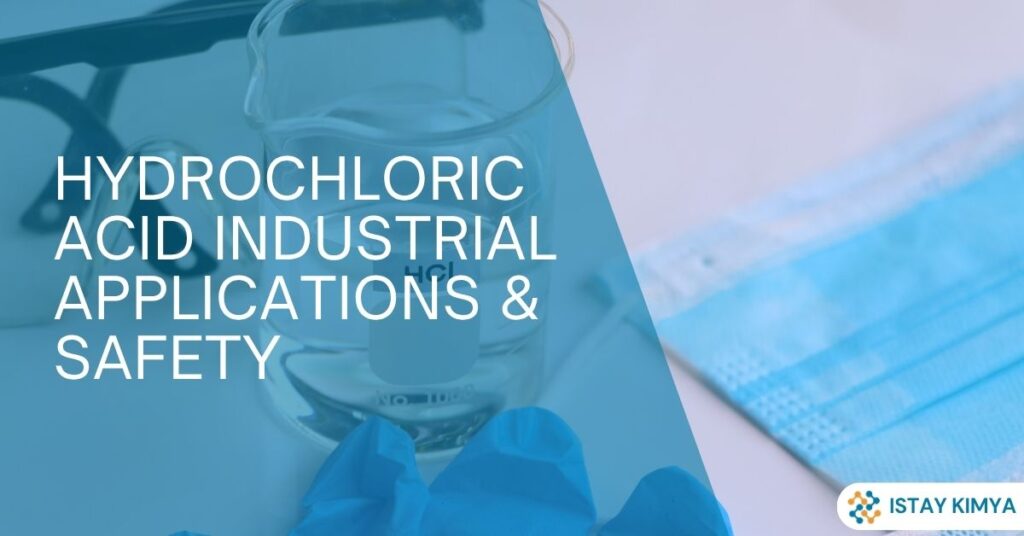resources
Hydrochloric Acid: Industrial Applications & Safety
Hydrochloric acid, commonly known as HCl, is a clear, colorless, and highly corrosive liquid. It is formed by dissolving hydrogen chloride gas in water. Due to its strong acidic nature, HCl is widely used in various industrial applications, including metal processing, chemical manufacturing, and water treatment.
Table of Contents
Chemical Properties of Hydrochloric Acid
Steel Industry Applications
Oil and Gas Industry Applications
Food Processing Applications
Water Treatment Applications
Leather and Textile Industry Applications
Chemical Manufacturing Applications
Construction Industry Applications
Pharmaceutical Industry Applications
Laboratory Uses
Safety Measures and Handling
Storage Guidelines
Environmental Impact
Frequently Asked Questions (FAQs)
Chemical Properties of Hydrochloric Acid
-
Molecular Formula: HCl
-
Molar Mass: 36.46 g/mol
-
Appearance: Colorless, transparent liquid
-
Odor: Pungent, irritating smell
-
Solubility: Highly soluble in water
-
pH: Strongly acidic (pH < 1)
These properties make hydrochloric acid an effective reagent in various chemical reactions and industrial processes.
Steel Industry Applications
In the steel industry, hydrochloric acid is primarily used for pickling, a process that removes rust, scale, and other impurities from steel surfaces. This treatment prepares the steel for further processing, such as galvanizing or coating.
Oil and Gas Industry Applications
Hydrochloric acid plays a crucial role in the oil and gas industry, particularly in oil well acidizing. In this process, HCl is injected into oil wells to dissolve limestone, cement, and other materials blocking the flow of oil and gas, thereby enhancing production.
Food Processing Applications
In the food industry, hydrochloric acid is used for various purposes, including:
-
pH Control: Adjusting the acidity of food products to ensure safety and stability.
-
Production of Additives: Manufacturing food additives like high-fructose corn syrup.
Water Treatment Applications
Hydrochloric acid is employed in water treatment processes to:
-
pH Adjustment: Neutralizing alkaline substances in water to achieve desired pH levels.
-
Regeneration of Ion Exchange Resins: Restoring the effectiveness of ion exchange resins used in water softening.
Leather and Textile Industry Applications
In the leather industry, HCl is used during the tanning process to remove lime from hides and adjust pH levels. In textiles, it aids in dyeing processes by modifying the pH of solutions, ensuring better dye uptake.
Chemical Manufacturing Applications
Hydrochloric acid serves as a key raw material in the production of various chemicals, such as:
-
Vinyl Chloride: Used to manufacture polyvinyl chloride (PVC) plastics.
-
Fertilizers: Production of phosphoric acid, a component in fertilizers.
Construction Industry Applications
In construction, HCl is utilized for:
-
Concrete Cleaning: Removing stains and efflorescence from concrete surfaces.
-
Brickwork Cleaning: Eliminating mortar residues and other contaminants from brick surfaces.
Pharmaceutical Industry Applications
Hydrochloric acid is used in the pharmaceutical industry for
-
pH Control: Adjusting the acidity of pharmaceutical products.
-
Synthesis of Active Ingredients: Participating in chemical reactions to produce active pharmaceutical ingredients.
Laboratory Uses
In laboratories, HCl is commonly used for:
-
Titration: Determining the concentration of basic solutions.
-
Sample Preparation: Digesting samples for analysis.
Safety Measures and Handling
Due to its corrosive nature, handling hydrochloric acid requires strict safety measures:
-
Personal Protective Equipment (PPE): Wear gloves, goggles, and protective clothing.
-
Ventilation: Ensure proper ventilation to avoid inhaling fumes.
-
Emergency Procedures: Have neutralizing agents and eyewash stations readily available.
Storage Guidelines
Proper storage of hydrochloric acid is essential to prevent accidents:
-
Containers: Use corrosion-resistant containers, such as those made from PVC or polyethylene.
-
Labeling: Clearly label containers with hazard warnings.
-
Segregation: Store away from incompatible substances like bases and oxidizers
Environmental Impact
Hydrochloric acid can have environmental impacts if not managed properly:
-
Water Pollution: Accidental releases can lower the pH of water bodies, harming aquatic life.
-
Air Pollution: Fumes can contribute to air pollution if not contained.
Frequently Asked Questions (FAQs)
Q1: What industries commonly use hydrochloric acid?
Hydrochloric acid is widely used in industries such as steel manufacturing, oil and gas, food processing, water treatment, leather tanning, chemical manufacturing, construction, pharmaceuticals, and laboratories
Q2: Is hydrochloric acid safe to use?
While hydrochloric acid is highly corrosive, it can be used safely with proper precautions, including the use of personal protective equipment and adherence to safety guidelines
Q3: How should hydrochloric acid be stored?
Store hydrochloric acid in corrosion-resistant containers, clearly labeled, and segregated from incompatible substances. Ensure storage areas are well-ventilated and equipped with safety measures.
Q4: Can hydrochloric acid be used in food processing?
Yes, hydrochloric acid is used in food processing for pH control and the production of additives like high-fructose corn syrup. However, its use is regulated to ensure food safety.
Q5: What are the environmental concerns associated with hydrochloric acid?
Improper handling or accidental releases of hydrochloric acid can lead to water and air pollution, affecting aquatic life and contributing to environmental degradation.
For more information on Hydrochloric Acid and to explore our product offerings, visit Istay Kimya’s Hydrochloric Acid Product Page.
